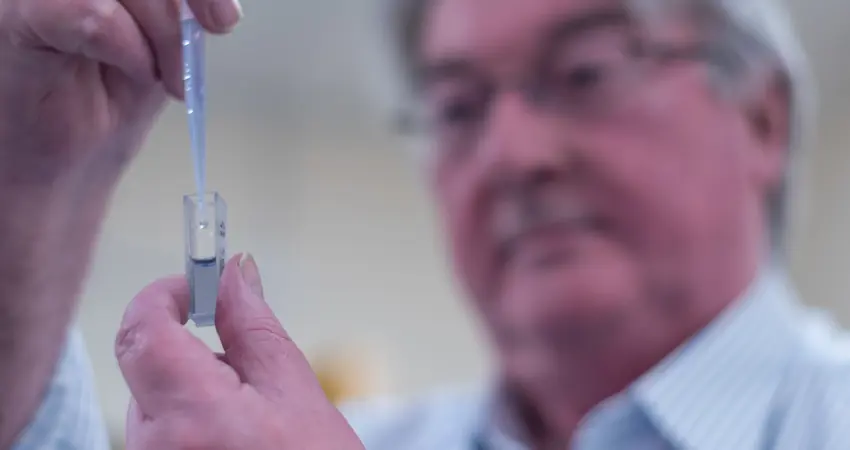30 May 2022
Explore Science Together event 7 June
New collaborations between Oxford researchers and community groups to be showcased at the Oxford University Museum of Natural History on 7 June

Watlington Climate Action Group are extracting natural inks and pigments from waste hedge material and incorporating them into carbon dioxide absorbing paint
What happens when eight Oxfordshire community groups are given access to the world-class skills, knowledge and resources of the University of Oxford and Oxford Brookes University researchers?
SCIENCE TOGETHER is a brand new, grass-roots programme that harnesses the power of community-led collaborative research projects to overcome challenges and seize opportunities for people who live and work in Oxfordshire. It is bringing together diverse people and expertise to address major issues and questions impacting local people’s lives.
To showcase some of the new projects and approaches being developed, Science Together is hosting ‘Explore Science Together’ on Tuesday 7 June 2022, an interactive day of free workshops and activities at the Oxford University Museum of Natural History, followed by an opportunity to explore the collaborations in more depth in the evening.
During museum opening hours, visitors will have to chance to interact with the community groups involved in the programme and participate in eight workshops, activities and demonstrations, ranging from making natural paint from sustainable materials, exploring the evolution of hip-hop technology, creating their own app, and much more. Each session is led by one of the local organisations that have been collaborating with university researchers this year, with opportunities to get hands-on, learn more and provide feedback to help take the work-in-progress projects to the next level.
In the evening, guests will have the chance to find out more about each collaboration from the researchers, community groups and service users involved, in ‘Science on the Sofa’ from 7-9pm – a candid conversation hosted by Science Together lead, Oli Moore.
Since September 2021, eight research projects, involving 33 scientists from across the two universities, have been developed with groups ranging from Barton coLAB for teens, to Daybreak, an inclusive scheme for those with dementia – and covering themes such as tackling under-reported bike crime, facilitating communication for people with special educational needs and disabilities (SEND), and researching the impact of freeform play on young people’s development.
Professor of e-Research David De Roure, Oxford-Research Centre, who has been involved in the project, says: "This has been a brilliant collaboration – it’s inspired me to look at things in new ways, have new conversations and get some excellent insights. I don’t think this could have happened any other way – it’s been a unique and rewarding experience.’
Science Together community group projects with Engineering Science involvement
Daybreak – This project has two research strands. Researchers from the University of Oxford’s Department of Engineering Science are investigating how wearable technology can help people with dementia live independent lives for longer. Alongside this, researchers from the Oxford Brookes Centre for Psychological Research gather data on the impacts of therapeutic art classes and how they can positively influence the wellbeing of dementia sufferers.
Urban Music Foundation – Working with Oxford-based hip-hop artist Rawz, the Inner Peace Records collective, and researchers in the fields of Artificial Intelligence, Immunology, Technology and Literature, this collaboration has developed an immersive soundscape to help the Urban Music Foundation investigate people’s physiological responses to five epochs of popular music, from the 1950s to today. The aim is to understand more about the interplay between science, technology and human creativity.
Watlington Climate Action Group – This group is finding novel uses for hedge material from West Meadow that was felled as part of Watlington’s local habitat regeneration project, by extracting natural inks and pigments and incorporating them into carbon dioxide absorbing paint. The aim is to re-use the felled hedgerow material to generate environmentally sustainable solutions for use in the local community and beyond.
Collaborating research departments
University of Oxford – Departments of Archaeology, Chemistry, Computer Science, Engineering Science, Experimental Psychology, Materials, Oncology, and Psychiatry; Nuffield Department of Medicine; Nuffield Department of Orthopaedics, Rheumatology and Musculoskeletal Sciences; Nuffield Department of Primary Care Health Services; Ruskin School of Art, Centre for Tropical Medicine and Global Health; Weatherall Institute of Molecular Medicine; Wellcome Centre for Human Genetics; Wellcome Centre for Integrative Neuroimaging
Oxford Brookes University – School of Architecture; School of Education; School of English and Modern Languages; Faculty of Health and Life Sciences; Department of Psychology, Health and Professional Development; Department of Sport, Health Sciences and Social Work




